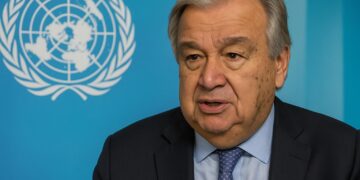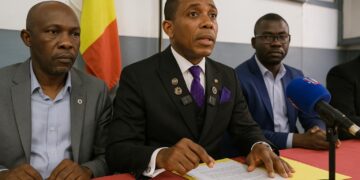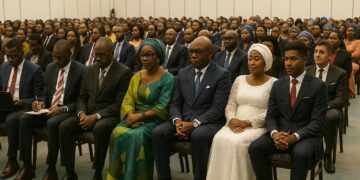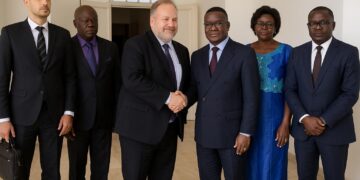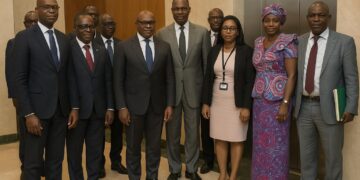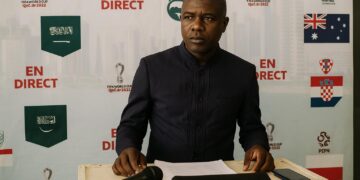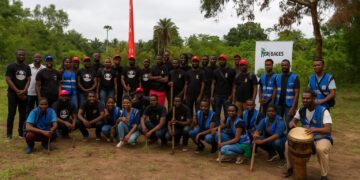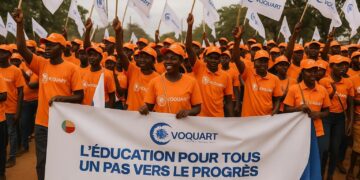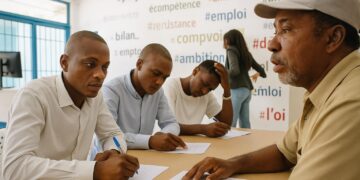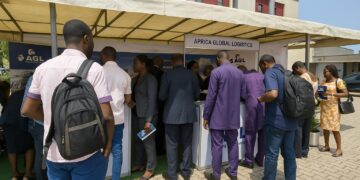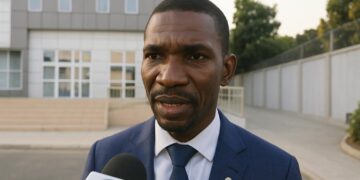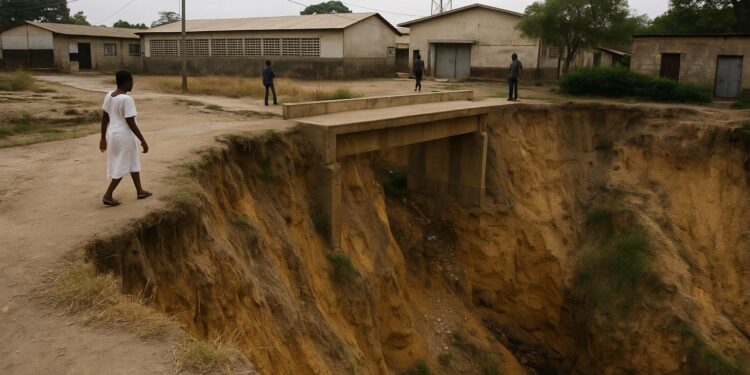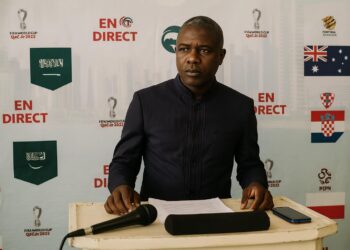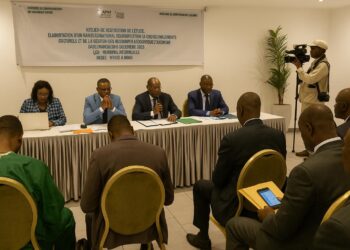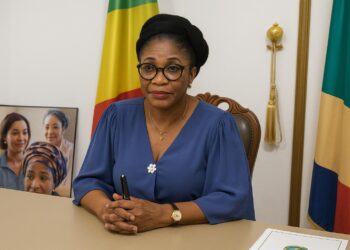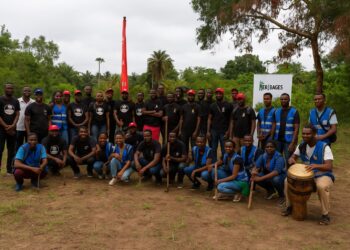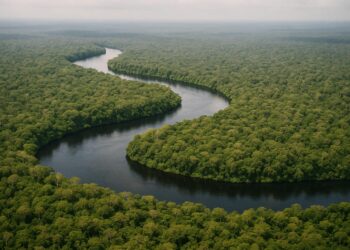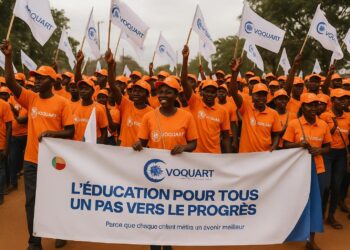Erosion risk intensifies in Mfilou
A gully has opened behind Itsali Public Primary School in the Sadelmi sector of Mfilou, seventh district of Brazzaville, exposing classrooms and playgrounds to a precipice that deepens after every downpour.
Meteorologists recorded over 180 millimetres of rain during a single August storm, a volume capable of collapsing fragile lateritic soils and accelerating horizontal erosion under unpaved streets.
Local residents, already battling seasonal flooding, now monitor cracks on foundations with tape measures and smartphone photos, fearing a domino effect similar to the 2020 landslide that disrupted National Route 1.
Budgetary response and policy signals
The 2024 Finance Act earmarks 2.5 trillion CFA francs for erosion control, up 38 percent from 2023, confirming government intent to match physical climate risks with accelerated capital expenditure (Ministry of Finance 2023 budget annexes).
Priority districts include Mfilou, Djiri and Madibou, where preliminary geotechnical surveys are advancing under supervision of the National Agency for Major Works, known by its French acronym AGETIP-CM.
Fiscal analysts interpret the larger allocation as a signal to international partners that Brazzaville is mobilising domestic resources before tapping concessional climate finance windows such as the Green Climate Fund, the Adaptation Fund or forthcoming loss-and-damage facilities.
Impacts on education infrastructure
Itsali is the only state primary school serving roughly 640 pupils across eight classrooms; should the embankment collapse, catchment areas would shift and travel distances could triple for some families.
Head teacher Clarisse Mboungou warns that ‘learning outcomes already disrupted by COVID still lag national averages; another physical disruption could widen the gap’.
Education planners inside the Ministry of Pre-school, Primary and Secondary Education are studying modular classroom options and temporary relocation spaces, while advocating integrated watershed management so future capital spending protects both roads and schools.
Housing and urban planning implications
Satellite imagery from the Regional Center for Remote Sensing shows that in Sadelmi the erosive front advanced eleven metres between April 2022 and July 2023, consuming two courtyards and threatening a third parcel now valued at 18 million CFA francs.
Urbanists attribute the speed to unregulated sand mining downstream, which lowers the channel bed and tilts lateral slopes, a dynamic also visible along the Mfilou River corridor.
City Hall is updating zoning maps to incorporate red lines where new titles will require geotechnical verification, a move welcomed by the Order of Congolese Architects because it clarifies liability in case of future damage.
Opportunities for green engineering firms
Civil-works tenders scheduled for first quarter 2024 include bioengineering solutions—vetiver hedges, geotextile mats and terraced drains—opening a pipeline estimated at 52 billion CFA francs for contractors specialising in nature-based solutions.
International EPC groups already active in Congo’s road programme are expected to partner with local SMEs to meet local-content thresholds of 30 percent, favouring skill transfer in hydrological modelling and slope stabilisation.
Development finance institutions have flagged the erosion portfolio as compatible with blended finance structures mixing concessional loans and performance-based grants tied to school attendance metrics, an innovation considered by domestic asset managers seeking ESG-labelled products.
Community voices and stakeholder engagement
Neighbourhood chief Dieudonné Moussavou organised weekend gabion filling sessions, arguing that ‘if we protect the school first, public works will follow,’ a narrative that has attracted youth associations and diaspora remittances channelled through mobile money platforms.
Social scientists from Marien Ngouabi University document how such grassroots initiatives improve project ownership and reduce vandalism, an insight incorporated into the draft National Urban Resilience Strategy expected to be tabled before parliament in March.
Outlook for climate resilience financing
Rating agencies weigh physical-climate exposure when assigning sovereign outlooks; sustained investment in erosion control could strengthen the Republic of Congo’s case for lower risk premiums on future Eurobonds.
For investors, the Itsali case exemplifies how small social assets like a primary school can anchor larger value-at-risk calculations, guiding both municipal project selection and portfolio hedging against extreme-weather events.
If executed on schedule, the 2024 programme could become a showcase, combining domestic budget credibility, private capital mobilisation and measurable social co-benefits, three ingredients frequently highlighted by President Denis Sassou Nguesso in recent investment forums.
Regional comparisons and lessons
Erosion hot-spots ring several Central African capitals; Libreville’s Nzeng-Ayong district and Yaoundé’s Melen valley have implemented stepped gabion terraces co-financed by the French Development Agency, reducing sediment load by 60 percent within three rainy seasons.
Brazzaville engineers study these precedents to refine bill-of-quantities templates and limit contingencies, an approach that could shave eight to ten percent off total project costs according to a comparative memo circulated by the Central African Economic and Monetary Community.
Data and digital monitoring
AGETIP-CM plans to deploy low-cost Internet-of-Things sensors along the Sadelmi gully, streaming rainfall, soil-moisture and slope-movement data to an open dashboard hosted by the National Observatory for Climate Change, enhancing transparency for financiers and researchers alike.
Public-private hackathons slated for June will translate datasets into SMS alerts, a concept piloted in Pointe-Noire and credited with preventing two flood-related fatalities.




